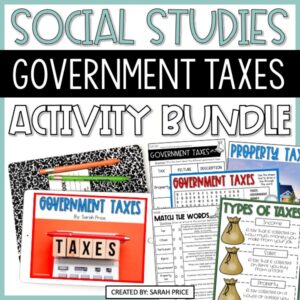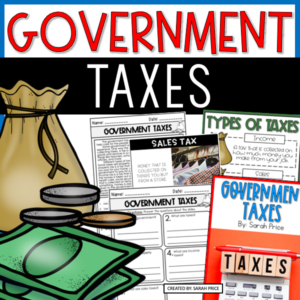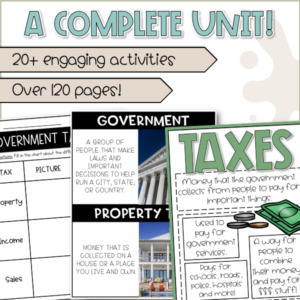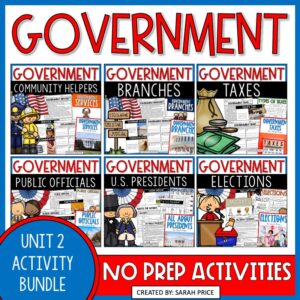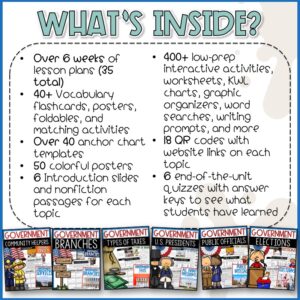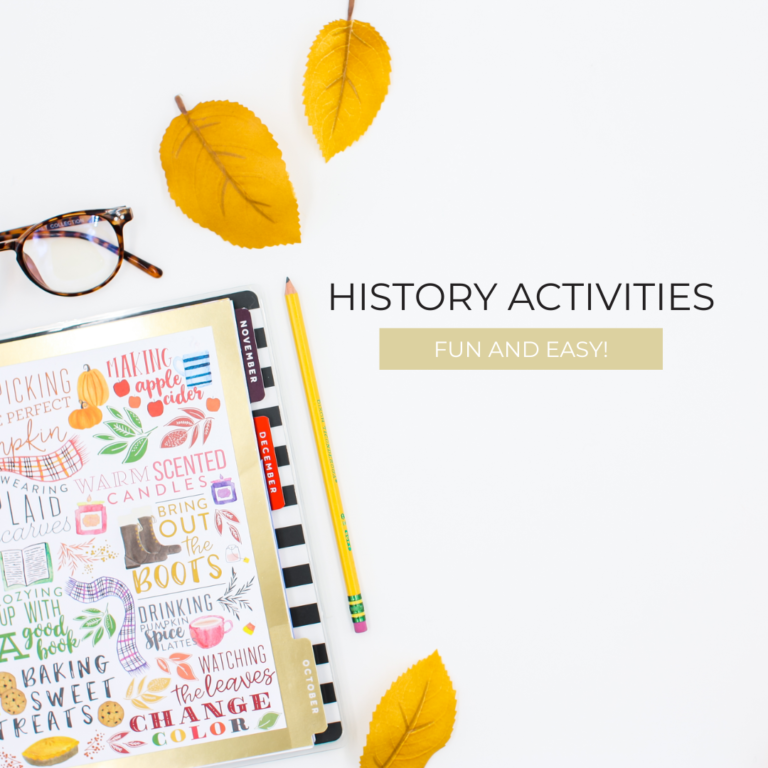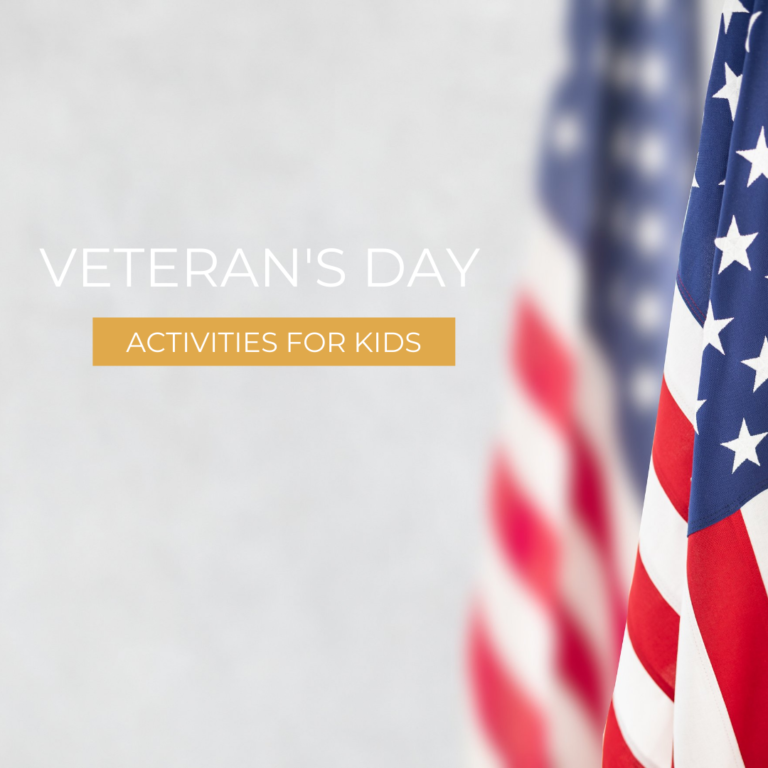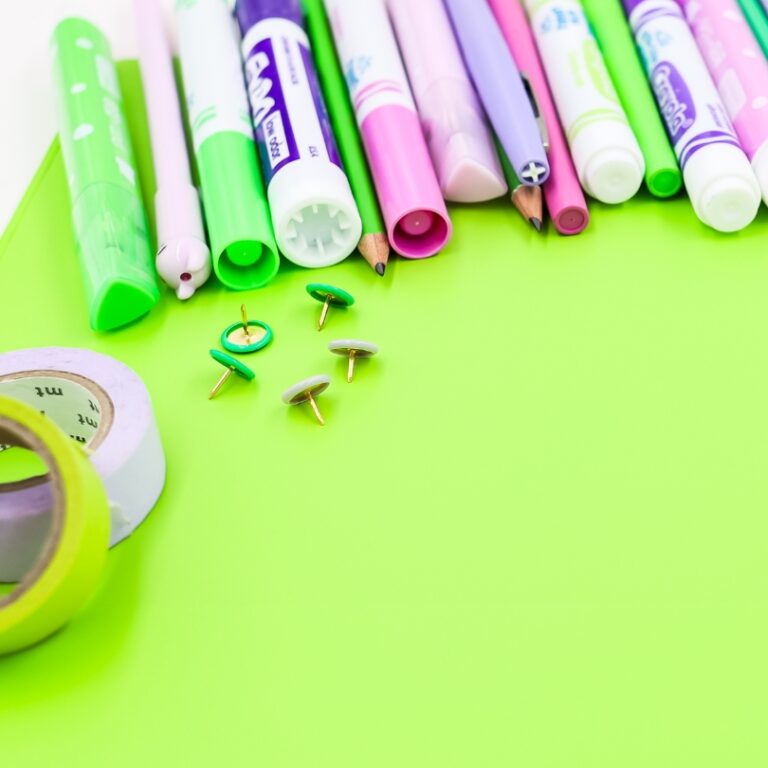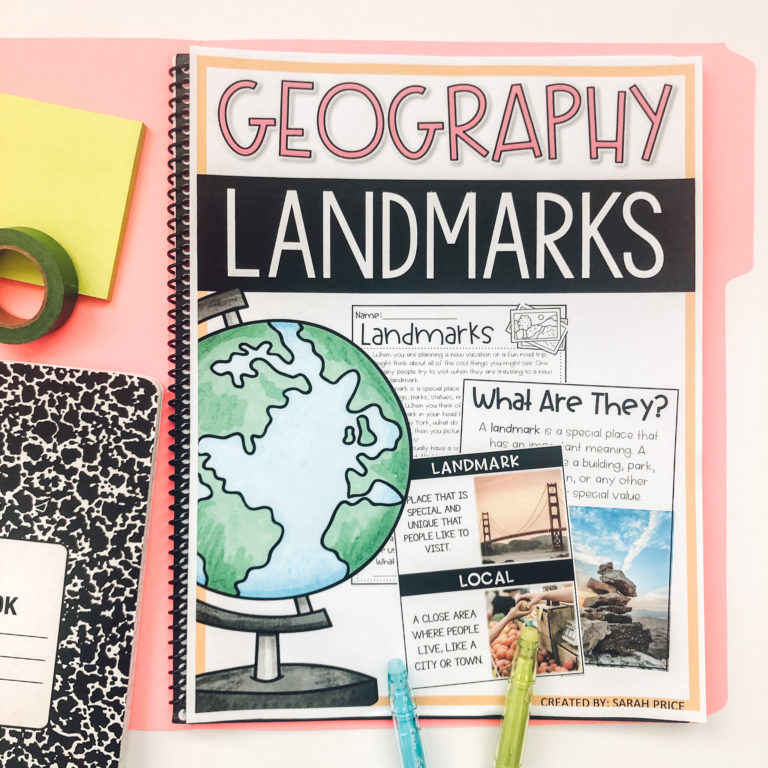How to teach taxes to kids: Fun Activities for 2nd-4th graders
Teaching taxes to kids is not the easiest topic to make exciting. But it is actually a great way to help them understand responsibility. And let’s be honest, most adults don’t even understand taxes. When we introduce kids to taxes early, they start to see that these contributions are necessary for maintaining everything from their favorite parks to the schools they attend.
Let’s explore how to make teaching taxes a fun and understandable topic for kids in 2nd through 4th grade!
Want to jump to the good stuff? Check out the lesson plans and print-ready worksheets here!
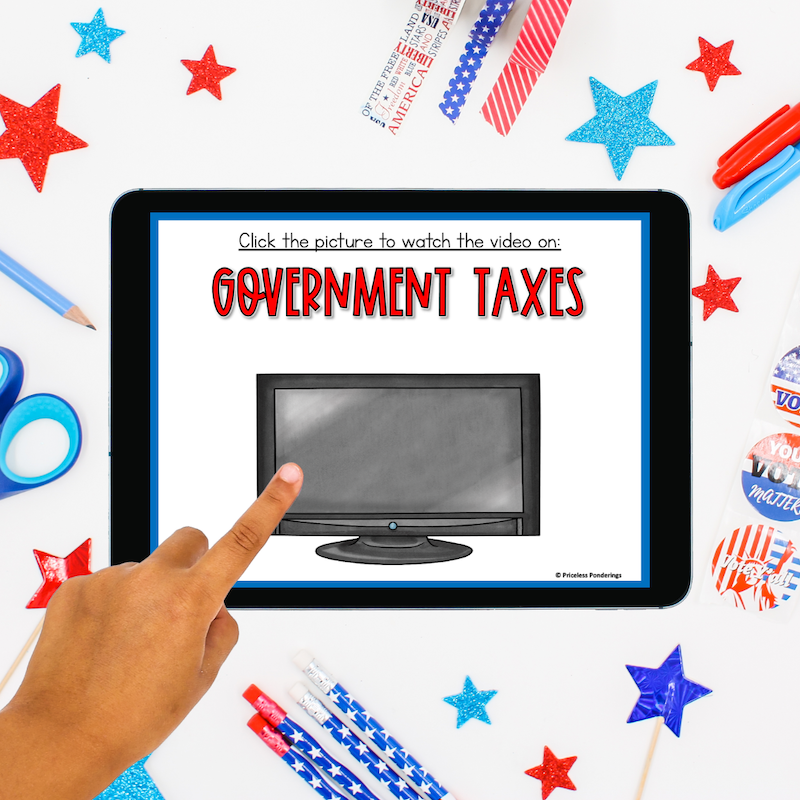
Sales Tax: Making Every Purchase Count
Let’s start with sales tax, which is often the first tax kids encounter. Every time we buy something—a snack, a toy, or a book—there’s a little extra charge added. This is called sales tax, and it helps fund local services. In the United States, sales tax varies by state and city, which might be a little confusing. But, for kids, it’s enough to know that this little bit of extra money goes toward things like keeping the library open, paying firefighters, and maintaining parks.
So how do we make this concept come alive?
Try setting up a mini “classroom store.” Let the kids “buy” items using play money, adding a small amount for sales tax. For example, if a candy costs $1, they might need to pay an extra 10 cents in tax. It’s a simple way to show them how even small amounts of tax add up to a big benefit. Plus, they’ll get some practice with basic math skills as they add up totals and “pay” for their purchases.
Property Tax: Funding Our Community’s Schools and Services
Now, here’s where it gets a little more interesting! Property tax is another type of tax kids should learn about. As it’s the reason their schools and parks have the funds they need.
Unlike sales tax, which is a little extra on things we buy, property tax is paid on things people own—like homes and land. This tax provides the bulk of the money for local governments to keep schools open, fund police and fire departments.
Want to make this lesson interactive? Try a “Community Builders” activity. Have students create a small town on paper or with blocks, assigning taxes to each building based on its “value.” The students can see how much revenue is generated and how that money might go toward building something cool, like a park or a library.
Income Tax: Contributing to Our Country’s Needs
Next up: income tax. This might be the biggest, trickiest type of tax for kids to wrap their heads around, but it’s super important.
When people work, a part of their paycheck goes to the government. In the U.S., the federal government uses this money to fund things like national defense, healthcare, and Social Security.
Here’s a simple, relatable way to teach income tax: Let’s say each student in the class gets a weekly “allowance” for completing classroom jobs. Take a small portion out as a “tax” and show them how this can be pooled to buy something for the whole class, like art supplies or a pizza party. Over time, they’ll see how each student’s contribution adds up to a big benefit.
Why Teaching Taxes to kids is Important
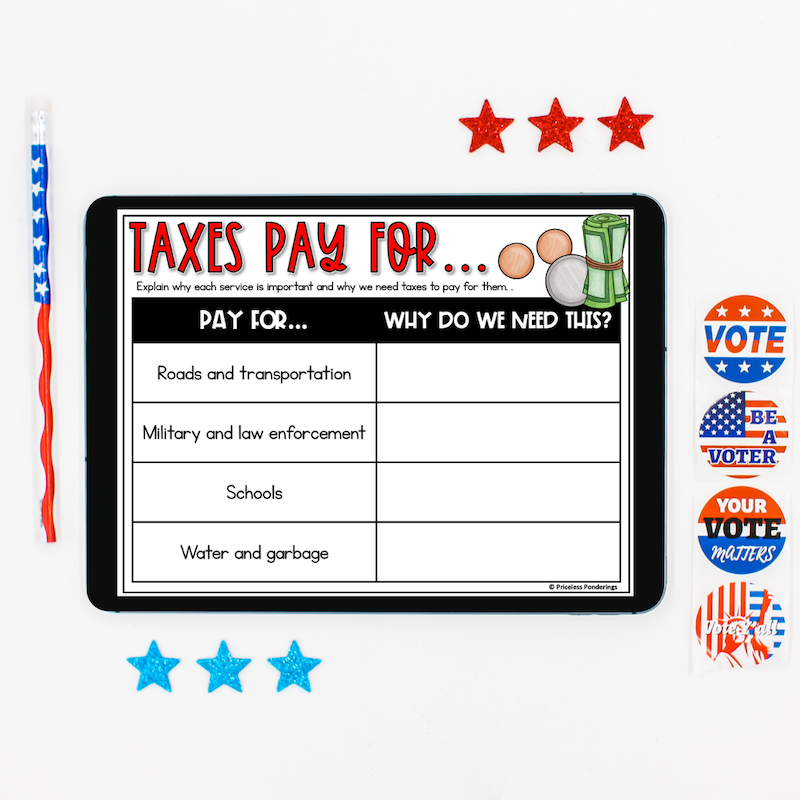
When we break it down, taxes are more than just money taken out of our pockets—they’re a way for us all to work together for the common good. This idea goes back centuries to what’s called a “social contract,” where people agree to contribute to society to support each other.
For example, federal taxes fund Social Security and healthcare, which ensure that older citizens and people who need help can still live with dignity. Taxes also fund national defense, so the country remains safe, and public schools, which means every child gets an education.
More Ways to teach Taxes to Kids:
Use Fun Writing prompts or Class discussions
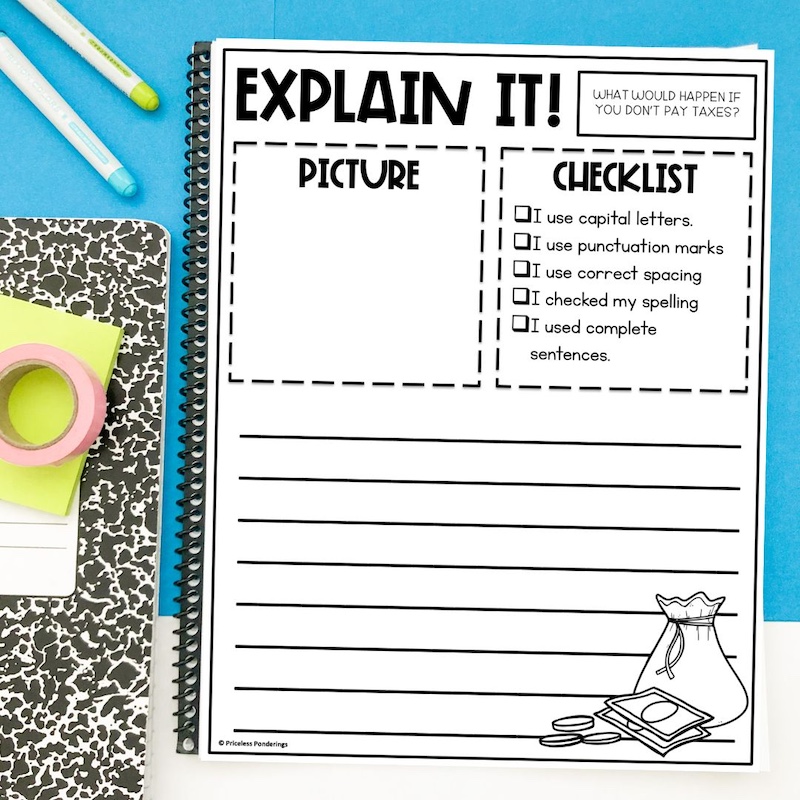
Here’s a thought-provoking question to ask your students: “What would happen if no one paid taxes?” It might start a lively discussion! Would schools still operate? What about fire stations or hospitals? This activity encourages kids to think about taxes not as something that takes away, but as something that gives back.
Have students create a foldable!
Each section can represent a different type of tax—like income, property, and sales taxes—and students can jot down notes or fun facts they learn about each one.
Use a reading comprehension passage!
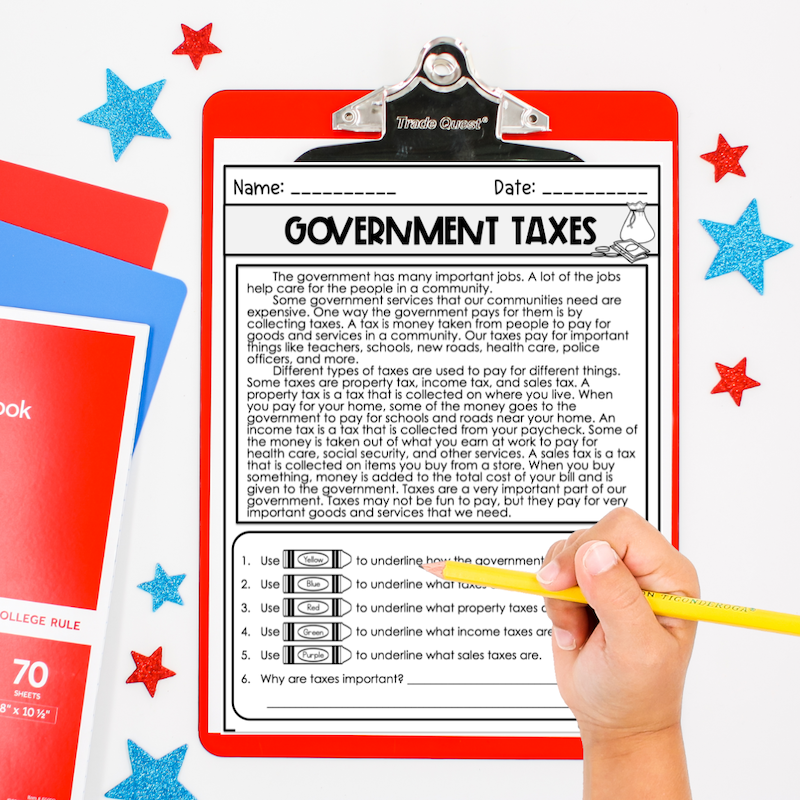
Find one explains these different taxes and why they are important to our community. Through activities like these, kids can grasp why taxes matter and see firsthand how these funds make their world better!
Explore with QR codes and web-quests!
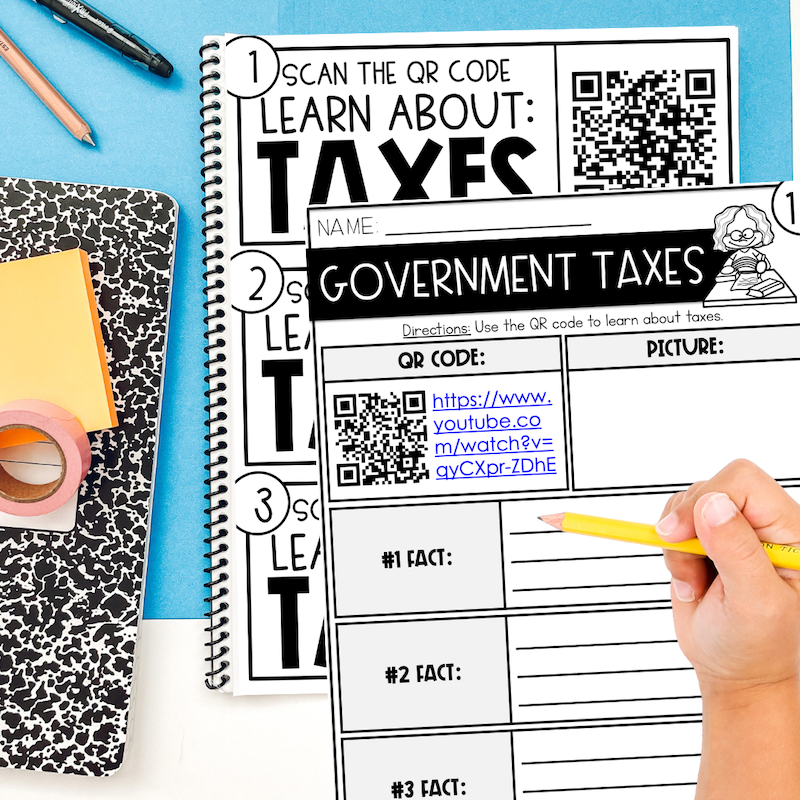
Place QR codes around the classroom or in their materials, linking to short videos or articles about what each tax funds. Or set up a web-quest where students can explore online resources to learn more about where tax dollars go, such as public libraries, national parks, and even social services. With these hands-on and digital tools, students will be engaged and gain a meaningful understanding of why taxes matter in their everyday lives!
Bringing It All Together
It’s one thing to learn the basics of taxes, but reinforcing this knowledge in creative ways can really help these lessons stick. There are some great educational games that teach kids about money and even simple tax concepts.
For parents, apps like Chores & Allowance Bot or PiggyBot allow kids to “pay” a small tax in their play money, giving them a taste of money management and social responsibility.
And if you’re looking for something out-of-the-box, a field trip to the city hall or fire station could be a perfect addition. Seeing real-life government workers in action shows kids the connection between taxes and the services they use every day. Or, if that’s not possible, invite a city council member or local official to come talk to the class. Hearing directly from someone involved in tax policy can make taxes feel more real and meaningful to them.
Building Future Citizens
When teaching taxes to kids, we’re doing more than explaining a financial obligation—we’re introducing them to the values of community and responsibility. By understanding why adults pay taxes, they’re learning what it means to contribute to society. Taxes fund the things that make our communities vibrant, from schools to parks to public transportation.
It might seem like a big idea for young students, but starting small with fun activities and relatable examples can make a world of difference. And who knows? You might just spark a new appreciation for taxes in the next generation!
Grab the lesson plans today!
Ready to make teaching taxes to kids a breeze? Save yourself hours of prep time with our complete Taxes Unit, designed specifically for busy teachers like you! This all-in-one resource includes simple lesson plans, colorful anchor charts, engaging worksheets, hands-on activities, and so much more. With everything you need to help your students understand the basics of taxes in a fun and accessible way, you’ll be free to focus on what matters most—connecting with your class.
Grab your Taxes Unit today and get ready to make learning unforgettable!
Looking for more government activities
GOVERNMENT LEADERS FOR KIDS: FUN WORKSHEETS AND ACTIVITIES
ALL ABOUT THE PRESIDENTS OF THE UNITED STATES: 8 EXCITING ACTIVITIES
HOW TO START A CLASSROOM GOVERNMENT FOR KIDS

